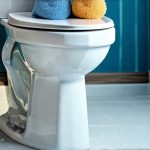Incontinence, even in its mildest forms, can significantly impact quality of life. It’s often perceived as an embarrassing condition leading individuals to social withdrawal and anxiety. However, it’s crucial to understand that mild incontinence is incredibly common – affecting millions across all age groups – and frequently manageable with lifestyle adjustments. Many people live full, active lives while experiencing occasional leakage, and proactive steps can often minimize its occurrence and associated stress. This article focuses on building daily routines designed not to “cure” mild incontinence (as treatment varies based on the underlying cause), but rather to proactively support bladder health and reduce episodes of unwanted leakage.
It’s important to remember that prevention is key, but it’s also about empowerment. Taking control of your daily habits can provide a sense of agency and confidence even when dealing with a challenging condition. This isn’t about restrictive rules; it’s about incorporating small, sustainable changes into your everyday life that collectively contribute to improved bladder function. It’s always advisable to consult with a healthcare professional to determine the cause of incontinence and receive personalized advice tailored to your specific needs. The following routines are meant as supportive measures alongside any medical guidance you may be receiving.
Bladder Training & Fluid Management
Bladder training isn’t about forcing yourself to “hold it” for extended periods, which can actually worsen issues. Instead, it’s a gradual process of retraining your bladder to function more efficiently and increasing the time between bathroom visits. This involves consciously delaying urination when you first feel the urge, starting with small increments. Begin by adding 5-10 minutes to your usual bathroom schedule each day. Over time, aim for intervals of 2-3 hours between voiding. Keep a bladder diary – noting times you urinate, the amount, and any associated urges or leakage – can be incredibly helpful in tracking progress and identifying patterns.
Fluid management is equally vital. It’s not about drastically reducing fluid intake; dehydration can actually irritate the bladder. Instead, focus on when and what you drink. Spread your fluid intake evenly throughout the day rather than consuming large amounts at once. Avoid excessive caffeine, alcohol, and carbonated beverages as these are known diuretics – meaning they increase urine production. Consider switching to decaffeinated options or herbal teas. Remember that certain foods can also have a diuretic effect; citrus fruits and spicy foods are common culprits for some individuals. For those looking to adjust their fluid intake, exploring daily fluid balance can be beneficial.
Consistent fluid intake throughout the day helps regulate bladder function. It’s also helpful to “double void” – after urinating, wait a few seconds then try again. This ensures complete emptying of the bladder, reducing residual urine which can contribute to urgency and leakage. Finally, before engaging in activities that might trigger incontinence (exercise, heavy lifting), proactively empty your bladder as a preventative measure.
Dietary Adjustments for Bladder Health
Diet plays a surprisingly significant role in bladder health. While there’s no “one-size-fits-all” diet for incontinence, certain foods and beverages can exacerbate symptoms or contribute to irritation. As mentioned previously, caffeine, alcohol, and carbonated drinks should be limited. However, beyond those common offenders, consider the impact of acidic foods.
- Tomatoes, citrus fruits (oranges, lemons, grapefruit), and vinegar-based dressings can irritate the bladder lining in some individuals.* Identifying your personal triggers through a food diary is invaluable. If you notice increased urgency or leakage after consuming specific foods, try eliminating them for a period to see if symptoms improve. Fiber intake is also important; constipation puts pressure on the bladder and pelvic floor muscles, worsening incontinence. Aim for 25-30 grams of fiber daily from sources like whole grains, fruits, and vegetables.
Hydration remains paramount, but choose fluids wisely. Water is always best. Herbal teas (chamomile, peppermint) can be soothing, while avoiding artificial sweeteners which may cause irritation in some people. A balanced diet rich in nutrients supports overall health, including bladder function. Considering daily food choices can significantly improve urinary tract health.
Pelvic Floor Muscle Exercises (Kegels)
Pelvic floor muscles play a critical role in supporting the bladder and urethra. Weakened pelvic floor muscles are often a contributing factor to stress incontinence – leakage caused by physical activity or pressure. Kegel exercises strengthen these muscles, improving bladder control. Identifying your pelvic floor muscles is the first step. Imagine you’re trying to stop the flow of urine midstream (though this shouldn’t be done regularly as it can disrupt normal voiding patterns). The sensation you feel when doing that is engaging your pelvic floor muscles.
To perform Kegels correctly: 1) Empty your bladder before starting. 2) Contract your pelvic floor muscles for 3-5 seconds, then relax for the same amount of time. 3) Repeat this sequence 10-15 times, several times a day. Consistency is key. You can do Kegels discreetly while sitting, standing, or even walking. Avoid holding your breath during exercises. If you’re unsure if you’re performing them correctly, consult a physical therapist specializing in pelvic floor health. They can provide personalized guidance and ensure proper technique.
Lifestyle Modifications & Activity Considerations
Beyond diet and exercise, certain lifestyle modifications can significantly impact incontinence management. Maintaining a healthy weight is crucial; excess weight puts additional pressure on the bladder and pelvic floor muscles. Regular exercise – beyond Kegels – benefits overall health and strengthens core muscles which support bladder function. However, be mindful of activities that exacerbate symptoms.
High-impact exercises like running or jumping can worsen stress incontinence. Consider switching to lower-impact alternatives like walking, swimming, or cycling. When engaging in physical activity, wear supportive clothing and consider using absorbent products for peace of mind. Proper lifting techniques are essential. Avoid heavy lifting whenever possible, and when you must lift, bend your knees, keep your back straight, and engage your core muscles to minimize pressure on the bladder. Finally, managing stress levels is important as stress can contribute to urinary urgency and frequency. Incorporate relaxation techniques like yoga, meditation, or deep breathing exercises into your daily routine.
It’s vital to approach these routines with patience and self-compassion. Progress isn’t always linear, and setbacks are normal. The goal isn’t perfection but rather consistent effort towards improved bladder health and a greater sense of control. Remember that seeking professional guidance from a healthcare provider is essential for proper diagnosis and personalized treatment plans. This information serves as a complement to medical advice, not a replacement for it. To further support your lifestyle adjustments, consider incorporating daily self-care routines specifically designed for sensitive urethras.
For those seeking a more structured approach to daily habits, reviewing daily steps to prevent worsening incontinence can be incredibly helpful. Additionally, understanding the connection between posture and flow is valuable; exploring flow-aware standing routines could offer relief during prolonged periods of activity. Finally, remember that consistent hydration is key—learn about daily water portioning for optimal prostate comfort and bladder health.
Taking a proactive approach to your daily routines can empower you to manage mild incontinence effectively and improve your overall quality of life. Don’t hesitate to seek guidance from healthcare professionals and utilize the resources available to support your journey toward better bladder health.





















